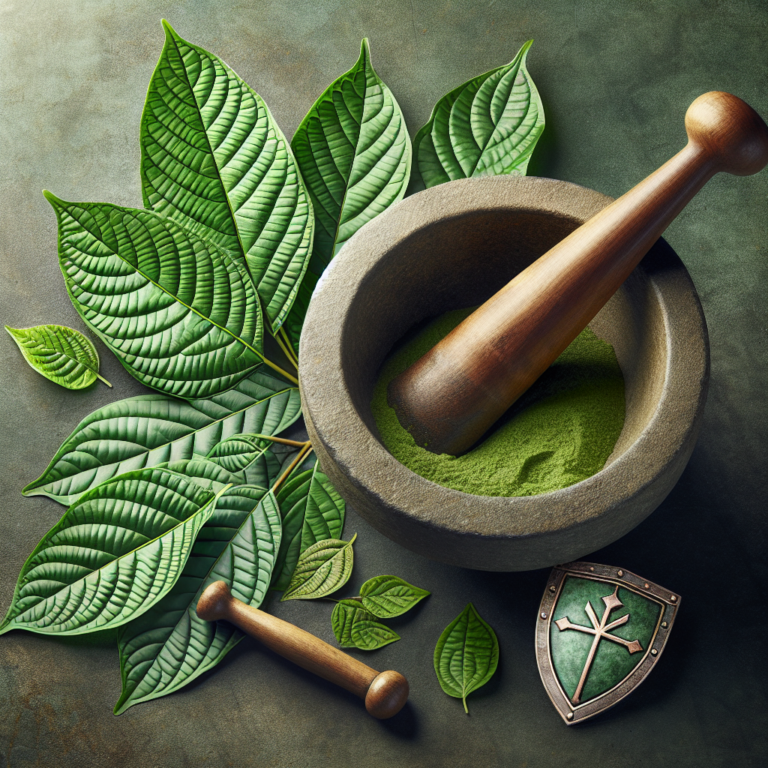
Understanding Kratom: What You Should Know About Labels
When you first encounter kratom, the sheer variety of labels on capsules can be overwhelming. Each label offers key insights, but unless you understand what to look for, you might miss important information. Kratom comes in various strains, strengths, and formulations, and labels are designed to guide your choices. In this article, we’ll break down what each part of a kratom capsule label really means, so you can make an informed decision.
The Basics of Kratom
Kratom, or Mitragyna speciosa, is a tropical tree native to Southeast Asia. Traditionally, people chew the leaves for their stimulating and pain-relieving effects. In recent years, kratom has gained popularity in Western countries, particularly in capsule form for its convenience and ease of use. Capsules can vary significantly in quality, potency, and target effects, which is why understanding the label is so crucial.
Strain Names: What Do They Indicate?
The first thing you’ll notice on a kratom capsule label is the strain name. This part is essential as it directly affects the effects you can expect. Some common strains include:
- Maeng Da: Known for its potency, this strain often provides energy and focus.
- Bali: Generally used for relaxation and pain relief.
- Red Vein: Often sought after for its calming effects.
- Green Vein: A balanced option that can provide both energy and pain relief.
Knowing the strain helps you set your expectations. For example, if you’re looking for something to energize you, a Maeng Da capsule is likely your best bet. On the other hand, if you want to unwind, a Bali or red vein strain might be your go-to.
Potency Levels: Understanding Milligrams and More
The potency level is another critical aspect to examine. Kratom capsule labels often state the amount of kratom in milligrams (mg). Higher milligrams usually indicate a stronger dose. However, everyone’s body reacts differently to kratom, so it’s wise to start with a lower dose before experimenting with higher levels.
Consider the following when assessing potency:
- Dosage Guidelines:
- Beginner: 1-2 grams
- Intermediate: 2-4 grams
- Advanced: 4-6 grams
Pay attention to the dosage instructions on the label. They are crafted to help you minimize side effects while maximizing benefits.
Origin Information: Why It Matters
The label often includes information about the product’s origin. This can give you an idea of quality and safety. Kratom from Thailand and Indonesia is widely regarded, but quality varies. Some manufacturers take pride in sourcing their kratom from specific regions known for their robust leaves.
Why is origin important?
- Soil Quality: Different regions have varying soil compositions, which can impact the alkaloid levels in kratom.
- Harvesting Methods: Ethical and sustainable harvesting practices ensure better quality.
- Regulatory Standards: Some countries have strict regulations that guarantee safer products.
Always choose brands known for transparency regarding their sourcing practices.
Alkaloid Content: The Science Behind the Effects
Kratom contains several active compounds known as alkaloids, primarily mitragynine and 7-hydroxymitragynine. These alkaloids interact with the body’s opioid receptors, producing effects like pain relief, mood enhancement, and increased energy. Labels may highlight specific alkaloid concentrations, giving you further insight into what to expect.
Understanding alkaloid content can help you choose the right product for your needs:
- Mitragynine: Generally provides stimulating effects.
- 7-Hydroxymitragynine: Often offers more sedative effects.
Different strains and sources have varying concentrations of these alkaloids, so it’s essential to read the label carefully.
Additional Ingredients: A Cause for Concern
Some kratom capsules contain additional ingredients, which can significantly alter their effects. Fillers, binders, or herbal blends may appear on the label. While some additional ingredients can enhance the benefits, others might introduce unwanted side effects.
Here’s a checklist for additional ingredients:
- Magnesium Stearate: Often used as a filler, but can reduce the kratom’s effectiveness.
- Herbal blends: Check if other herbs complement or counteract kratom’s effects.
Always prioritize kratom products with minimal additional ingredients to maintain effectiveness.
Labels and Certifications: What to Look For
A reliable kratom brand will usually display certifications or third-party testing results on its label. These indicate that the product has been tested for purity, potency, and contamination. Look for labels with certifications such as:
- GMP Certified: Ensures products follow Good Manufacturing Practices.
- Third-Party Testing: Validates that the product matches what’s claimed on the label.
These certifications provide extra assurance that you’re consuming a safe, effective product.
User Instructions: How to Interpret Them
Kratom labels typically include user instructions, detailing how to consume and store the product. Always pay attention to these recommendations. Proper usage ensures you get the right benefits while minimizing risks.
Consider common instructions:
- Dosage: How many capsules to take and how often.
- Storage: Keep capsules in a cool, dry place to preserve freshness.
Following these instructions maximizes your kratom experience and enhances safety.
Storage Guidelines: Keep It Fresh
Proper storage is crucial for maintaining the freshness of kratom capsules. Most labels will advise you to store them in a cool, dry place away from direct sunlight. Here are some best practices:
- Use airtight containers: This helps keep moisture out.
- Avoid heat sources: Excessive heat can degrade the kratom more quickly.
Taking care of your kratom capsules ensures you can enjoy their full benefits.
Common Myths Debunked
As you learn about kratom and its labels, you might encounter a few myths. Understanding these myths can help you make informed decisions. Here are some common misconceptions:
- All kratom is the same: Different strains serve various purposes; they are not interchangeable.
- Higher prices guarantee higher quality: While cost can be an indicator, always check for certifications and lab testing.
- Kratom is addictive like opiates: While it interacts with opioid receptors, reports and studies suggest lower addiction potential with moderate use.
Debunking these myths can lead to a more informed and safer kratom experience.
The Importance of Transparency in Labeling
Transparency matters. A trustworthy kratom vendor will provide a comprehensive label that offers crucial insights into their product. Always opt for brands that prioritize clear labeling, as this fosters consumer trust and safety.
Here are some signs of good transparency:
- Detailed ingredient lists that disclose all components.
- Evidence of lab testing to back the claims made on the label.
- Clear contact information for customer service inquiries.
By choosing brands that prioritize transparency, you enhance your kratom experience and bolster your safety.
Conclusion: Make Informed Choices
Navigating kratom capsule labels doesn’t have to be a daunting task. Armed with this guide, you can decode the important symbols and terms. Whether you’re after energy or relaxation, understanding labels will help you make informed and safe choices.
When choosing kratom, prioritize brands that offer transparency, quality, and thorough labeling. Your health and well-being are worth the extra effort. So next time you glance at a kratom label, you’ll know exactly what it means.
Frequently Asked Questions
1. What is the best kratom strain for beginners?
The green vein kratom is often recommended for its balanced effects. It offers mild stimulation and pain relief.
2. Can I mix different kratom strains?
Mixing strains can be done, but start slowly to understand how each affects you before combining them.
3. How should I store kratom capsules?
Store capsules in a cool, dry place away from sunlight to preserve freshness and potency.
4. Are there any side effects of taking kratom?
Possible side effects include nausea, headaches, and dizziness. It’s vital to start with a low dose.
5. How often can I take kratom?
Depending on your body’s response, some users may take it every few days, while others may use it more frequently. Monitor your reactions closely.
6. Can kratom be addictive?
While kratom does interact with opioid receptors, moderate use typically shows a lower addiction potential than traditional opioids.
7. Are there any legal issues surrounding kratom?
Laws vary by region. Always check local regulations before purchasing or using kratom.
8. Does kratom have any medicinal benefits?
Research suggests kratom may help with pain relief and anxiety, but more studies are needed for conclusive evidence.
9. What’s the difference between kratom extract and powder?
Kratom extract is more concentrated and often more potent than standard kratom powder.
10. Can I take kratom with other medications?
Consult your healthcare provider before mixing kratom with other medications to avoid adverse interactions.
References
- Kratom: History and Effects
- The Science of Kratom: Understanding Alkaloids
- Kratom Quality Control and Safety Standards
This comprehensive examination of kratom labels empowers you to make informed decisions. Always prioritize your health and well-being in your kratom journey.






